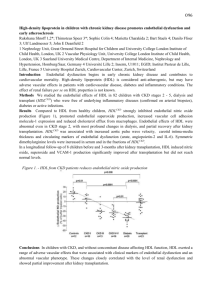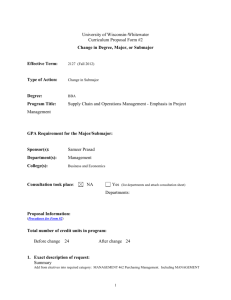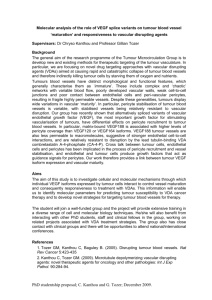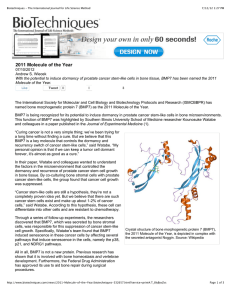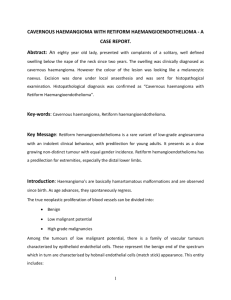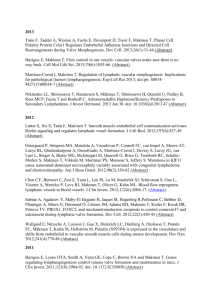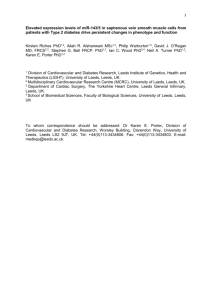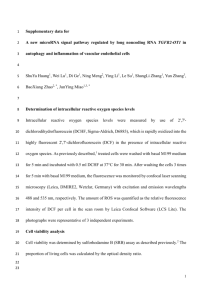O48 3-Dimensional Modeling Of Human Glomerulosclerosis John
advertisement
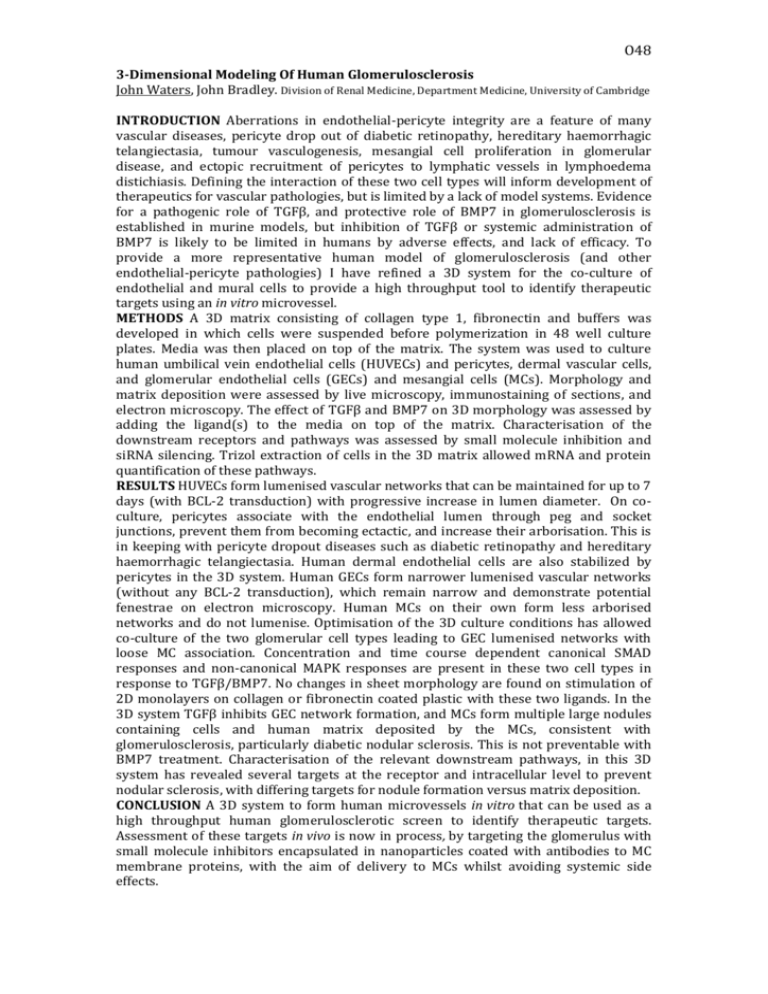
O48 3-Dimensional Modeling Of Human Glomerulosclerosis John Waters, John Bradley. Division of Renal Medicine, Department Medicine, University of Cambridge INTRODUCTION Aberrations in endothelial-pericyte integrity are a feature of many vascular diseases, pericyte drop out of diabetic retinopathy, hereditary haemorrhagic telangiectasia, tumour vasculogenesis, mesangial cell proliferation in glomerular disease, and ectopic recruitment of pericytes to lymphatic vessels in lymphoedema distichiasis. Defining the interaction of these two cell types will inform development of therapeutics for vascular pathologies, but is limited by a lack of model systems. Evidence for a pathogenic role of TGFβ, and protective role of BMP7 in glomerulosclerosis is established in murine models, but inhibition of TGFβ or systemic administration of BMP7 is likely to be limited in humans by adverse effects, and lack of efficacy. To provide a more representative human model of glomerulosclerosis (and other endothelial-pericyte pathologies) I have refined a 3D system for the co-culture of endothelial and mural cells to provide a high throughput tool to identify therapeutic targets using an in vitro microvessel. METHODS A 3D matrix consisting of collagen type 1, fibronectin and buffers was developed in which cells were suspended before polymerization in 48 well culture plates. Media was then placed on top of the matrix. The system was used to culture human umbilical vein endothelial cells (HUVECs) and pericytes, dermal vascular cells, and glomerular endothelial cells (GECs) and mesangial cells (MCs). Morphology and matrix deposition were assessed by live microscopy, immunostaining of sections, and electron microscopy. The effect of TGFβ and BMP7 on 3D morphology was assessed by adding the ligand(s) to the media on top of the matrix. Characterisation of the downstream receptors and pathways was assessed by small molecule inhibition and siRNA silencing. Trizol extraction of cells in the 3D matrix allowed mRNA and protein quantification of these pathways. RESULTS HUVECs form lumenised vascular networks that can be maintained for up to 7 days (with BCL-2 transduction) with progressive increase in lumen diameter. On coculture, pericytes associate with the endothelial lumen through peg and socket junctions, prevent them from becoming ectactic, and increase their arborisation. This is in keeping with pericyte dropout diseases such as diabetic retinopathy and hereditary haemorrhagic telangiectasia. Human dermal endothelial cells are also stabilized by pericytes in the 3D system. Human GECs form narrower lumenised vascular networks (without any BCL-2 transduction), which remain narrow and demonstrate potential fenestrae on electron microscopy. Human MCs on their own form less arborised networks and do not lumenise. Optimisation of the 3D culture conditions has allowed co-culture of the two glomerular cell types leading to GEC lumenised networks with loose MC association. Concentration and time course dependent canonical SMAD responses and non-canonical MAPK responses are present in these two cell types in response to TGFβ/BMP7. No changes in sheet morphology are found on stimulation of 2D monolayers on collagen or fibronectin coated plastic with these two ligands. In the 3D system TGFβ inhibits GEC network formation, and MCs form multiple large nodules containing cells and human matrix deposited by the MCs, consistent with glomerulosclerosis, particularly diabetic nodular sclerosis. This is not preventable with BMP7 treatment. Characterisation of the relevant downstream pathways, in this 3D system has revealed several targets at the receptor and intracellular level to prevent nodular sclerosis, with differing targets for nodule formation versus matrix deposition. CONCLUSION A 3D system to form human microvessels in vitro that can be used as a high throughput human glomerulosclerotic screen to identify therapeutic targets. Assessment of these targets in vivo is now in process, by targeting the glomerulus with small molecule inhibitors encapsulated in nanoparticles coated with antibodies to MC membrane proteins, with the aim of delivery to MCs whilst avoiding systemic side effects.

